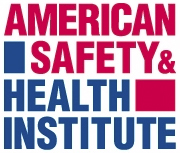
Diabetic Emergency: Recognizing and Responding
by Chris Schlesinger
In Home CPR Blog
Diabetic Emergency: Recognizing and Responding
Responding to a diabetic emergency is not complicated, however, diabetic emergencies can be deadly if untreated. Fortunately, most diabetics are well informed about their disease and know when and how to take action. For example, a good friend of mine who is diabetic was directing me in a play rehearsal when she suddenly started slurring her words. She then blurted out, “Get me juice!” Luckily, some was available and within seconds of drinking it her condition started to improve.
If you suspect someone is having a diabetic emergency, ask the person if you can help them. Ask if they are diabetic and whether they are having a diabetic emergency. Most diabetics will tell you what they need. If they are unable to communicate with you, but conscious, check to see if they have a medical alert tag. These tags can tell you if the person is diabetic.
Once you have established that the person is having a diabetic emergency, have them consume something with sugar in it, preferably in liquid form. Juice, soda, or water mixed with sugar are good choices. Do not give them diet soda – this has no sugar. If no liquid form of sugar is available, candy is a good choice.
Hypoglycemia – low blood sugar – is frequently the cause of diabetic emergencies. Giving a hypoglycemic diabetic sugar will usually improve their condition quickly. Do not worry about giving sugar to a diabetic who is suffering from high sugar levels — called hyperglycemia. Giving a hyperglycemic diabetic sugar will not make their condition worse.
After a diabetic consumes sugar, their condition should improve quickly. If their condition doesn’t improve within five minutes, call 911.
If a diabetic person becomes unconscious do not try to put food or liquid in their mouth. Call 911. If you know CPR, check for breathing and take the appropriate steps with the conditions you find.
I recommend that everyone take an American Red Cross or American Heart Association CPR class, but if you live or work with a diabetic, you should know how to perform CPR.
About The Author:
Chris Schlesinger’s company In Home CPR teaches on-site safety classes at homes and businesses throughout the San Francisco Bay Area, serving Alameda, Contra Costa, Marin, Napa, Sonoma, San Mateo, Santa Clara and Solano counties. He offers certifications through the American Heart Association and American Red Cross in CPR, BLS, AED, standard first aid and pediatric first aid. Visit his websites at CPR Certification San Francisco or CPR Class San Mateo.
Copyright 2024 In Home CPR






